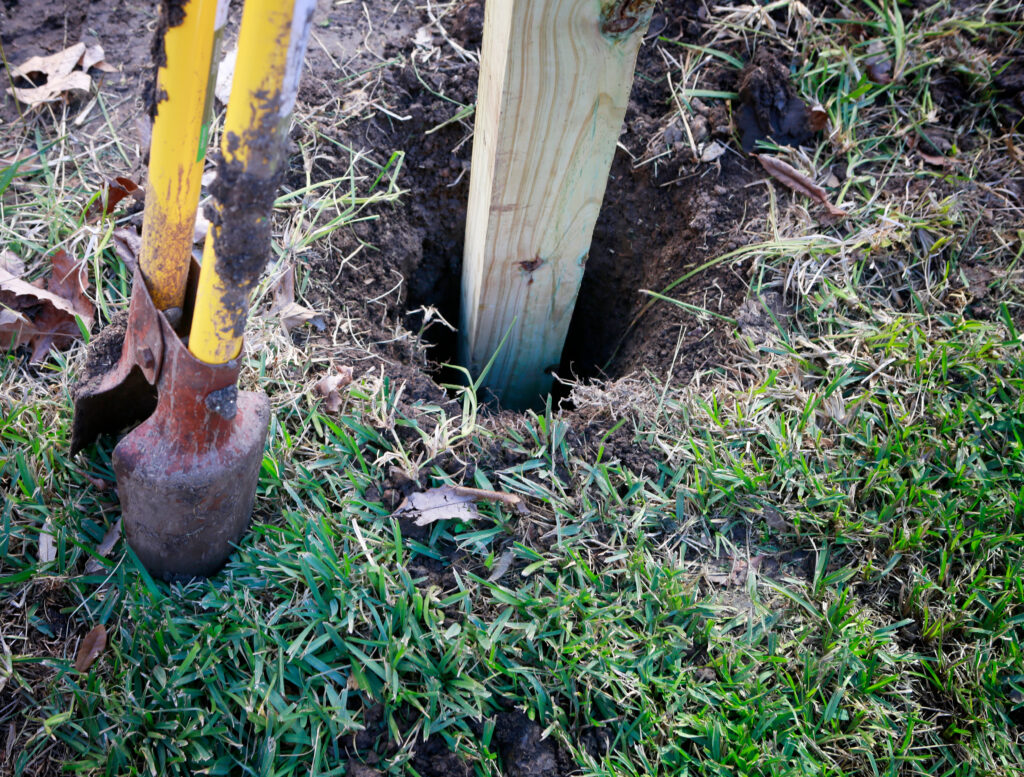This article is part of our Fencing Awareness Month brought to you by Bekaert.
When you’ve gathered your toolbox filled with the essential tools for fence building, it’s time to get your larger equipment. Read part 1 here to learn about building your fence toolbox.
We’ve outlined in this article the key pieces of equipment that are required for a fencing project. Although there may be other tools you need depending on the type of materials you’re using, these are the basics to gather.
Shovel: Digging the Foundation
A sturdy, round-point shovel is indispensable for digging holes for fence posts. Look for a shovel with a comfortable grip and a durable, rust-resistant blade. The round-point design allows for efficient digging, making it easier to create the foundation for your fence.
Post Hole Diggers: Precise Hole Creation
Post hole diggers are specialized tools designed specifically for creating holes for fence posts. Once you have your hole started and dug out, use your post hole diggers to help shape your hole to fit your post. As you dig too deep to use a shovel, your post hole diggers will be invaluable in cleaning out the leftover dirt at the bottom of the hole.

Spade: Shaping the Holes
A spade, with its flat, squared blade, is useful for shaping and refining the edges of the holes. This ensures a snug fit for the posts, minimizing any gaps or irregularities that could compromise the stability of the fence.
Tamping Bar: Compacting the Soil
After placing the posts in the holes, it’s crucial to ensure they are firmly set in the ground. A tamping bar, also known as a tamper, is used to compact the soil around the post, providing stability and preventing settling. It’s an essential tool for achieving a secure and long-lasting fence.
Tension Wire or String: Establishing Straight Lines
Tension wire or string is crucial for maintaining straight lines and even heights across your fence. It helps establish a guide for post placement, ensuring that the fence remains level and visually appealing.
Don’t Forget
Safety should be at the top of your list when choosing fencing materials. The fence should be tall enough to keep the horse contained. But, also consider the distance between the bottom of the fence and the ground.
At the bottom, an opening of 8 to 12 inches will keep feet and legs from getting trapped, and prevent foals from rolling under the fence. Fence openings should be either large enough that a hoof, leg, or even the head can’t become trapped, or very small (no more than 3 inches by 3 inches). This will prevent a hoof from penetrating the fence. To maintain tension, most wire fences, both fabrics, and high-tensile smooth wire, require triangular-shaped bracing at the corners. Put these at intervals of about 1/8 mile. The acute angles formed by brace wires represent entrapment hazards if the horse can reach them. A good design (such as boards used in corners to block access) can prevent injury, even death.

Visibility, especially with wire fencing, is too often overlooked. A white plank fence of wood or PVC is easily seen by horses. However, wire can be almost invisible when a horse panics and runs. Improve visibility to wire fences by adding a top rail of wood; PVC; or durable white vinyl fence ribbon, either standard or electrified. This addition not only makes a wire fence more visible, but it also deters horses from reaching over the fence to graze.






